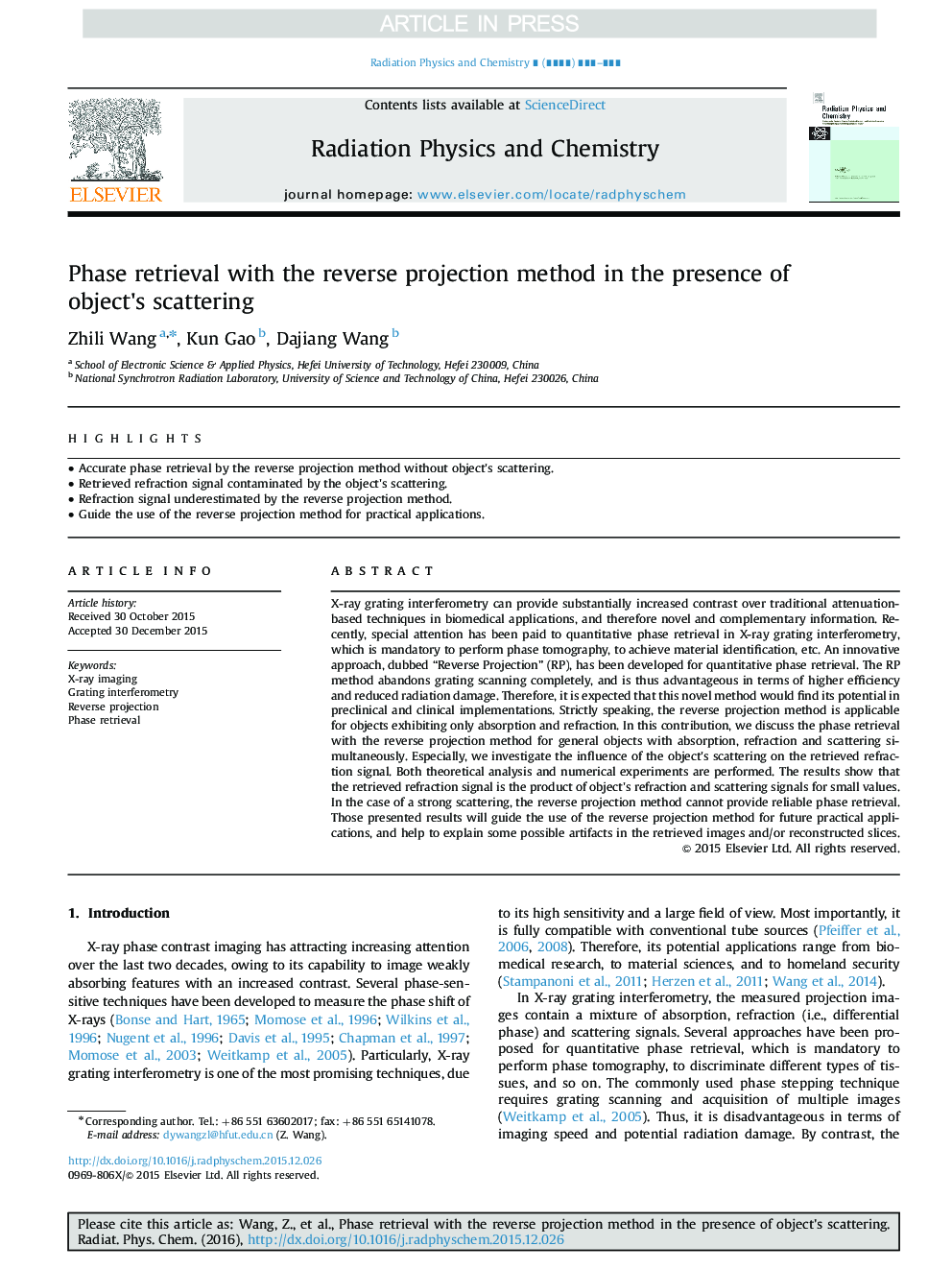| Article ID | Journal | Published Year | Pages | File Type |
|---|---|---|---|---|
| 5499242 | Radiation Physics and Chemistry | 2017 | 4 Pages |
Abstract
X-ray grating interferometry can provide substantially increased contrast over traditional attenuation-based techniques in biomedical applications, and therefore novel and complementary information. Recently, special attention has been paid to quantitative phase retrieval in X-ray grating interferometry, which is mandatory to perform phase tomography, to achieve material identification, etc. An innovative approach, dubbed “Reverse Projection” (RP), has been developed for quantitative phase retrieval. The RP method abandons grating scanning completely, and is thus advantageous in terms of higher efficiency and reduced radiation damage. Therefore, it is expected that this novel method would find its potential in preclinical and clinical implementations. Strictly speaking, the reverse projection method is applicable for objects exhibiting only absorption and refraction. In this contribution, we discuss the phase retrieval with the reverse projection method for general objects with absorption, refraction and scattering simultaneously. Especially, we investigate the influence of the object's scattering on the retrieved refraction signal. Both theoretical analysis and numerical experiments are performed. The results show that the retrieved refraction signal is the product of object's refraction and scattering signals for small values. In the case of a strong scattering, the reverse projection method cannot provide reliable phase retrieval. Those presented results will guide the use of the reverse projection method for future practical applications, and help to explain some possible artifacts in the retrieved images and/or reconstructed slices.
Related Topics
Physical Sciences and Engineering
Physics and Astronomy
Radiation
Authors
Zhili Wang, Kun Gao, Dajiang Wang,
